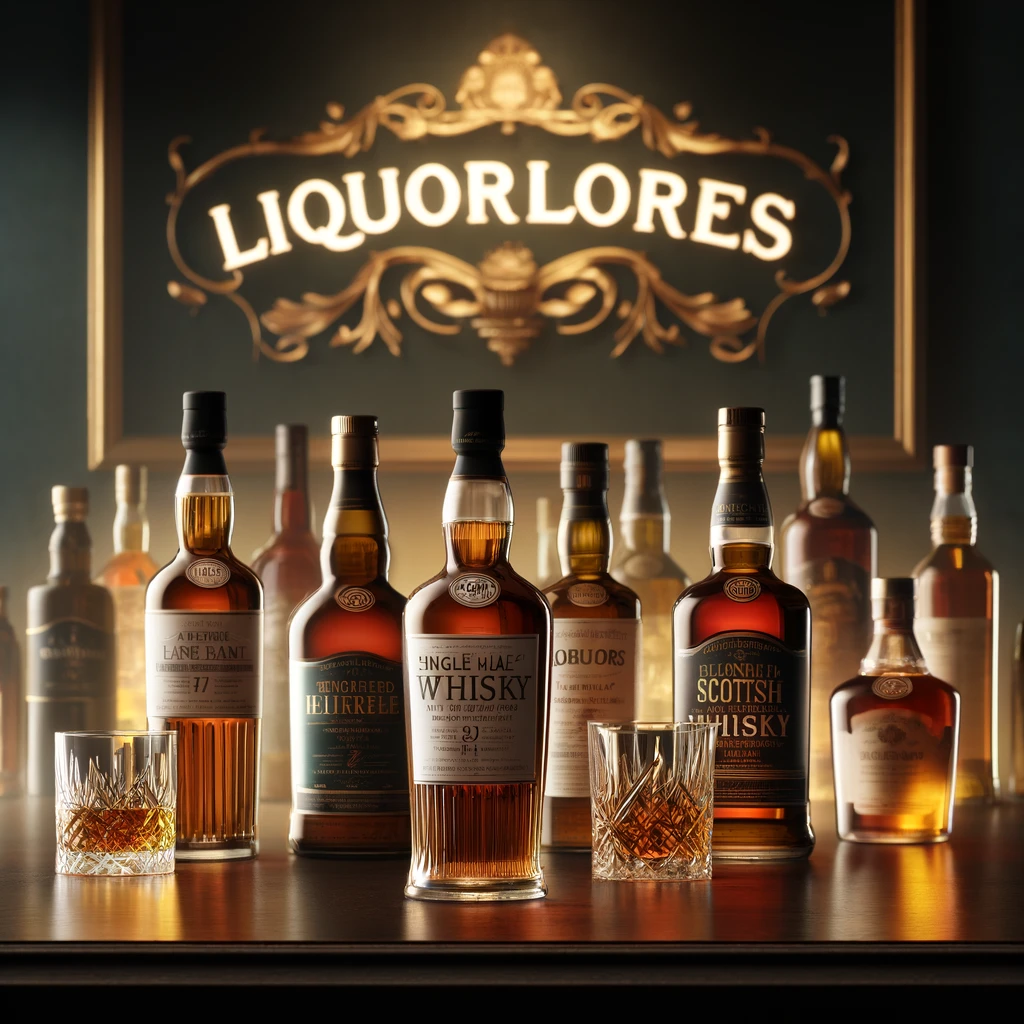
Table of Contents
When exploring the rich and varied world of Scotch whisky, two major categories stand out: single malt and blended Scotch. While both offer unique tastes and histories, understanding their differences is essential for any whisky enthusiast. This blog post delves into the distinctions between single malt and blended Scotch, shedding light on their production, flavor profiles, and ideal consumption occasions.
What is Scotch?
Scotch whisky, often simply called Scotch, is malt whisky or grain whisky made in Scotland. It’s a broad category that encompasses various types of whisky made within the country. Scotch whisky must be made in a manner specified by law, which includes fermentation of cereals, distillation, and aging in oak barrels for at least three years. The unique characteristics of Scotch come from the Scottish environment itself—the water, peat, and the Scottish climate all influence the final product. Scotch is globally renowned for its richness and complexity and comes in various styles, primarily categorized into single malts and blended whiskies.
What is Single Malt Scotch?
Single malt Scotch is a whisky produced from only water and malted barley at a single distillery by batch distillation in pot stills. The term “single” in single malt refers to the whisky being sourced from one single distillery, which contributes to its distinct flavor profile. These whiskies are often celebrated for their complexity and specific geographical character, which can range from the smoky and peaty flavors of Islay to the fruity and floral notes of the Speyside region. For a deeper dive into the world of single malt Scotch, consider reading our detailed Single Malt Whisky Guide: Exploring Craftsmanship & Flavors.
What is Blended Scotch?
Blended Scotch, on the other hand, is made from a mix of one or more single malt Scotch whiskies with one or more single grain Scotch whiskies. The art of blending is in combining these different whiskies to create a consistent flavor profile that can appeal to a wide range of palates. Brands like Johnnie Walker, Chivas Regal, and Dewar’s are renowned for their expertly crafted blends that ensure a balanced and smooth taste.
Production Differences
The production process for each type of Scotch plays a crucial role in shaping their unique attributes:
- Single Malt Scotch is all about preserving the distinctive character of the distillery’s output, often using traditional methods and sometimes aging in selected casks to enhance the flavor.
- Blended Scotch involves master blenders combining various malt and grain whiskies to achieve a harmonious, consistent product. This process allows for a broad flavor spectrum, making blended Scotch typically more accessible and versatile in cocktails and other mixed drinks.
Flavor Profiles
Flavor profiles between single malts and blended Scotch whiskies can vary significantly:
- Single Malt Scotch tends to offer a richer and more pronounced taste, with nuances that reflect its origin, water source, malt treatment, and barrel aging process. To explore more about the regional differences, read Scotland’s Whisky Regions: A Connoisseur’s Guide.
- Blended Scotch is designed to be smoother and more mellow, with the blending process evening out extreme flavors to appeal to a broader audience.
Famous Examples of Single Malts and Blended Scotch Whiskies
To further illuminate the distinction between single malt and blended Scotch, let’s look at some renowned examples from each category:
Single Malt Scotch Whiskies
- Glenfiddich 12 Year Old – Known for its pear and subtle oak flavors, it’s a quintessential Speyside malt that showcases the traditional craftsmanship of single malt distillation.
- Ardbeg 10 Year Old – Famous for its bold, smoky flavors, this Islay single malt is a favorite among those who appreciate a peatier, more intense whisky.
- Dalwhinnie 15 Year Old – Representing the Highlands, this whisky is noted for its gentle honeyed flavors and a smooth finish, making it an excellent introduction to the complexity of single malts.
Blended Scotch Whiskies
- Johnnie Walker Blue Label – This luxurious blend is renowned for its multi-layered symphony of flavors, including honey, citrus fruits, and a hint of smokiness, sourced from some of the rarest and most mature stocks from across Scotland.
- Chivas Regal 12 Year Old – This smooth, rich blend is made using some of the finest malt and grain Scotch whiskies, creating a creamy, aromatic taste profile that is exceptionally easy to enjoy.
- Monkey Shoulder – A relatively modern blend of three different Speyside single malts, designed to be more approachable with a playful edge, ideal for cocktail mixing as well as enjoying neat.
Choosing Between Single Malt and Blended Scotch
Choosing between single malt and blended Scotch depends on personal preference and the drinking occasion:
- For purists and enthusiasts looking to savor intricate flavors and the heritage of specific distilleries, single malts provide a deep, immersive experience.
- For casual drinkers or those new to Scotch, blended whiskies offer an accessible starting point due to their smoothness and balanced character.
Both single malt and blended Scotch whiskies hold esteemed places in the world of spirits, each offering different experiences to whisky drinkers. Whether you lean towards the robust complexity of a single malt or the harmonious blend of a Scotch mixture, both categories offer vast and rewarding flavors to explore. Whichever you choose, each sip brings with it a history of craftsmanship and the promise of a delightful tasting journey.
How useful was this post?
Click on a star to rate it!
Average rating 0 / 5. Vote count: 0
No votes so far! Be the first to rate this post.
